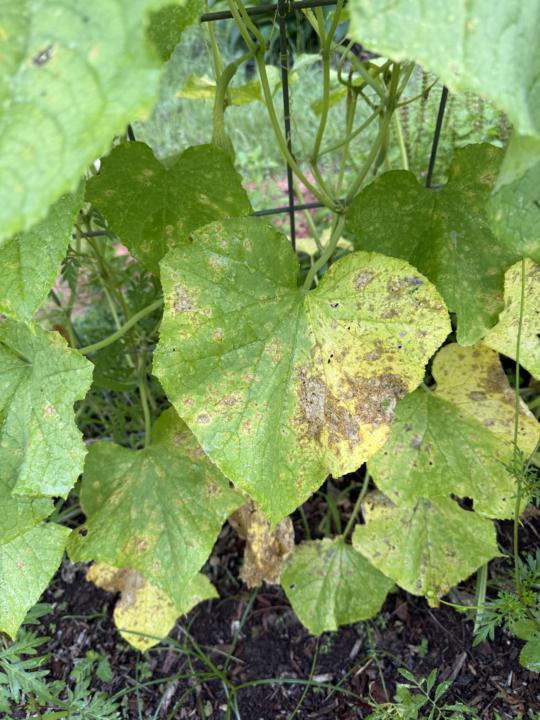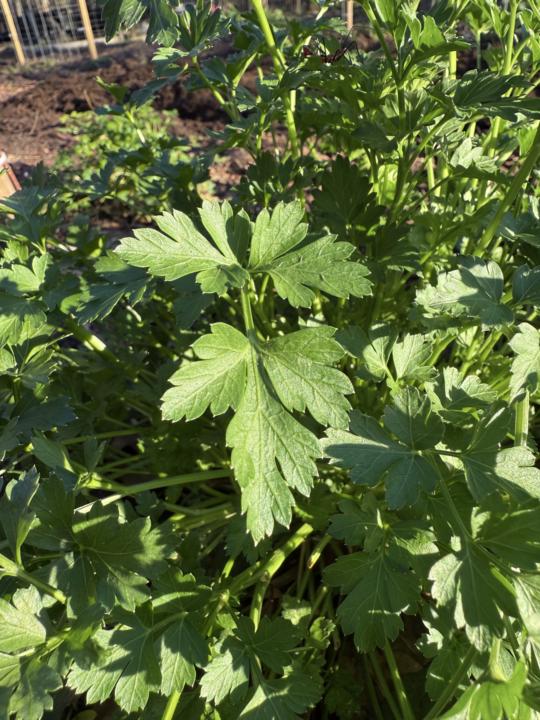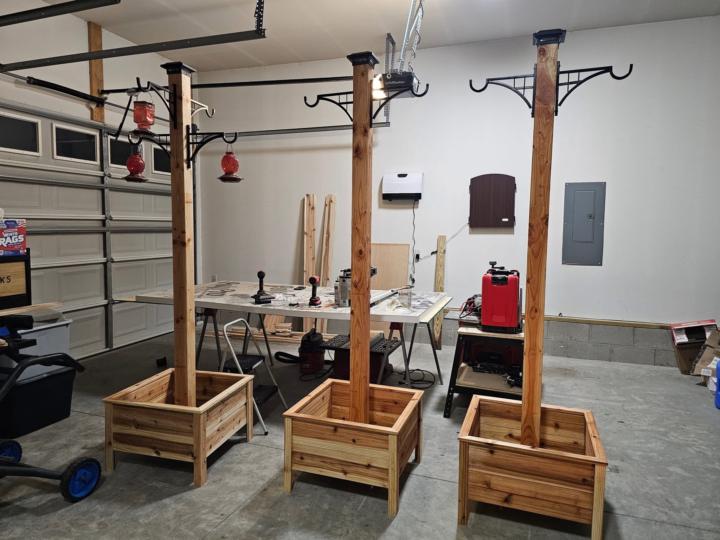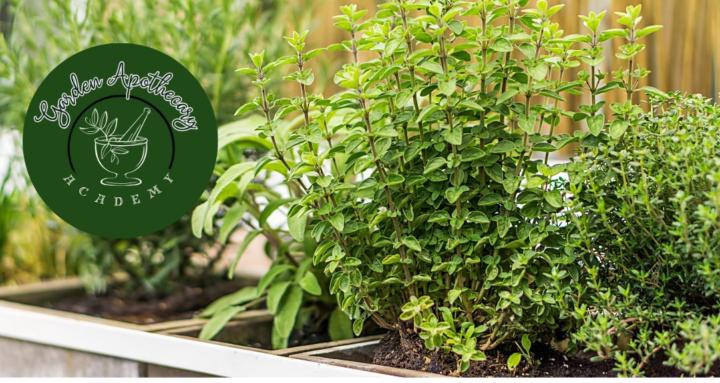Herbs & other perennials that help with insect control in general
I’m looking to plant alot of various perennial stuff (cold weather hardy… I’m in Michigan) that will contribute to warding off insects. (Bonus points if it will look nice too 😜) Anyone have any favorites to recommend??
Fungal Diseases in the Garden
We have been getting rain- lots of rain. When it isn't raining it is still above 80% humidity. Fungal diseases are a huge challenge when it is this kind of wet, humid, and warm. Regardless of where you garden, fungal diseases can be a challenge. Here is an in depth look at common fungal problems and how to avoid the fungus getting a hold of your garden. Fungal Diseases: 1. Powdery Mildew: White or grayish powdery spots on leaves and stems, often caused by fungi like Erysiphe or Sphaerotheca. Thrives in warm, humid conditions but doesn’t require standing water. 2. Downy Mildew: Yellow or white patches on leaf undersides, caused by pathogens like Peronospora or Plasmopara. Favors wet, warm weather and can spread rapidly. 3. Leaf Spot Diseases: Small, dark spots with yellow halos on leaves, caused by fungi like Alternaria, Cercospora, or Septoria. Warm, moist conditions accelerate spread. 4. Root Rot: Caused by fungi like Phytophthora or Rhizoctonia, leading to wilting, yellowing, and root decay. Overly wet soil and warm temperatures are key triggers. 5. Anthracnose: Dark, sunken lesions on leaves, stems, or fruit, caused by Colletotrichum or Gloeosporium. Warm, rainy weather promotes its spread. 6. Rust: Orange or yellow pustules on leaves, caused by fungi like Puccinia or Uromyces. Warm, humid conditions with prolonged leaf wetness encourage outbreaks. 7. Botrytis Blight (Gray Mold): Fuzzy gray growth on flowers, fruits, or stems, caused by Botrytis cinerea. Thrives in cool to warm, wet environments. These diseases often spread through water splashes, high humidity, or poor air circulation. Proper plant spacing, drainage, and avoiding overhead watering can help prevent them. Keep Your Plants Happy: Battling Fungal Diseases the Organic Way Warm, wet weather is like a party invite for fungal diseases that can wreck your garden. Powdery mildew, downy mildew, leaf spots, root rot, anthracnose, rust, and botrytis blight love these conditions. But don’t worry—you can fight back with organic treatments and smart prevention. Here’s the lowdown on keeping your plants healthy without harsh chemicals.
Anthracnose- a common disease in the garden
There are so very many challenges that a gardener can face in a single season, but various plant diseases are a big challenge. Each region has different variations, here in the South, Anthracnose is a very common problem. This post will focus on the variation that is a challenge to cucumbers- one of my favorite vegetables! Thankfully, herbs are pretty immune to a lot of diseases, so that is a blessing! Anthracnose, caused by the fungus Colletotrichum orbiculare, is a common disease affecting cucumbers, leading to reduced yield and quality if not managed. It thrives in warm, wet conditions, making it a challenge for growers in humid climates. This course covers how to identify anthracnose and effective organic treatments to keep your cucumber crop healthy. REMEMBER! The healthier your soil, the stronger your plants! Identifying Anthracnose Anthracnose presents distinct symptoms on cucumbers: - Leaves: Circular, water-soaked spots that turn dark brown or black, often with a yellow halo. Severe infections cause leaves to wilt or drop. - Stems: Sunken, dark lesions that can girdle vines, disrupting nutrient flow. - Fruit: Small, sunken spots that expand into dark, crater-like lesions, sometimes with pinkish-orange spore masses in wet conditions. Affected fruit is often unmarketable. The fungus spreads via rain, overhead watering, or contaminated tools and survives on crop debris or infected seeds. Organic Treatment Strategies Managing anthracnose organically focuses on prevention and cultural practices, with some natural remedies to suppress the disease: 1. Crop Rotation: Rotate cucumbers with non-host crops (e.g., legumes or corn) for at least 2–3 years to reduce fungal buildup in the soil. 2. Sanitation: Remove and destroy infected plant debris promptly. Clean tools and avoid working in wet fields to limit spore spread. 3. Resistant Varieties: Plant cucumber varieties labeled as anthracnose-resistant, such as ‘Marketmore 97’ or ‘County Fair’. Check seed catalogs for resistance ratings. 4. Improve Airflow: Space plants adequately (12–18 inches apart) and trellis vines to enhance air circulation, reducing leaf wetness. Avoid overhead watering; use drip irrigation instead. 5. Organic Fungicides: Apply approved organic treatments like: 6. Compost Tea: Some growers use aerated compost tea to boost beneficial microbes on plant surfaces, potentially outcompeting the fungus. Evidence is anecdotal, so combine with other methods. 7. Mulching: Apply organic mulch (e.g., straw or wood chips) to prevent soil-borne spores from splashing onto plants during rain.
3
0

Worms in Your Garden: Who's the Pest and How Bt Can Help
Herb gardens are a delight—fresh basil, fragrant rosemary, zesty cilantro—until some uninvited worms crash the party. Not all worms are troublemakers, but a few pesky culprits can turn your herbs into a buffet. Let’s meet the usual suspects and see how Bacillus thuringiensis (Bt) can save the day! The Worms 1. Cutworms: These sneaky little larvae love to chew through tender herb stems at soil level, toppling your plants overnight. Basil and parsley are prime targets. 2. Armyworms: True to their name, these voracious eaters march through your garden, stripping leaves from dill, chives, or anything green in their path. 3. Cabbage Worms: Don’t let the name fool you—they’ll happily munch on more than cabbage. These green caterpillars adore cilantro and other leafy herbs. 4. Tomato Hornworms: While they’re famous for tomatoes, these chunky pests won’t say no to nearby herbs like basil or oregano if they’re in the mood. Earthworms? They’re the good guys, aerating soil and breaking down compost—no need to worry about them! Bt to the Rescue Enter Bt, the garden’s natural bouncer. This soil-dwelling bacterium produces proteins that are toxic to these leaf-munching pests but safe for humans, pets, and beneficial bugs like bees and ladybugs. It’s like a VIP list—only the bad worms get kicked out. To use Bt, pick up a spray or powder form from your garden store. Mix it as directed, then lightly coat your herb leaves, focusing on areas with nibble marks. The pests eat the treated foliage, and within a day or two, they’re done for—no harsh chemicals needed. Apply it in the early morning or late afternoon to avoid sun breakdown, and reapply after rain or if you spot new invaders. With Bt in your toolkit, those herb-munching worms won’t win this year. Your herbs will stay lush, flavorful, and ready for your next culinary masterpiece or herbal tincture! BUT- do not spray herbs or plants (like the parsley pictured) who are hosting the butterflies you love!

What’s your favorite container?
I found this cool idea on Facebook! What’s your favorite container to plant in?

1-8 of 8

skool.com/gardenapothecary
An academy guaranteed to teach how to grow and use herbs medicinally for both you and your livestock.
Powered by



